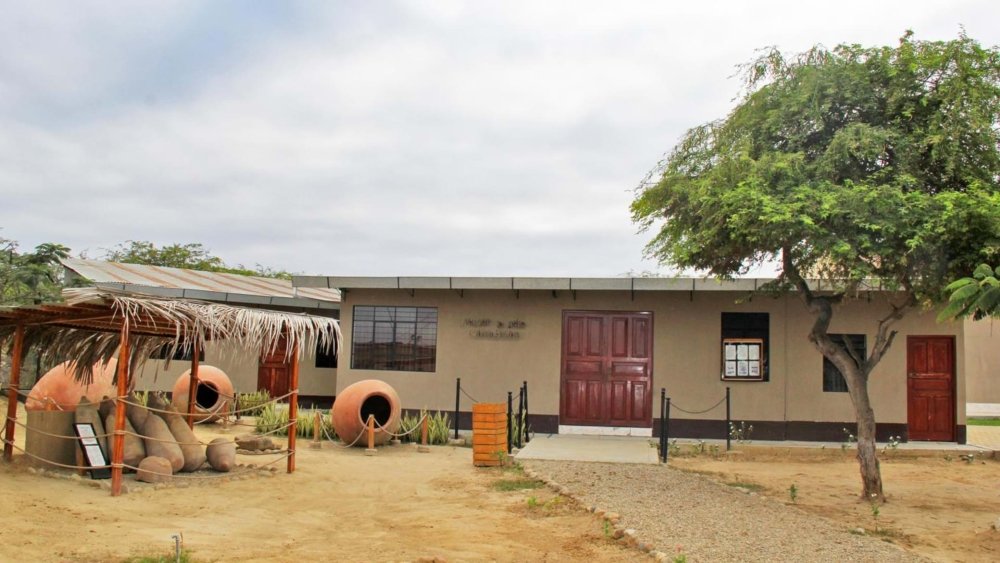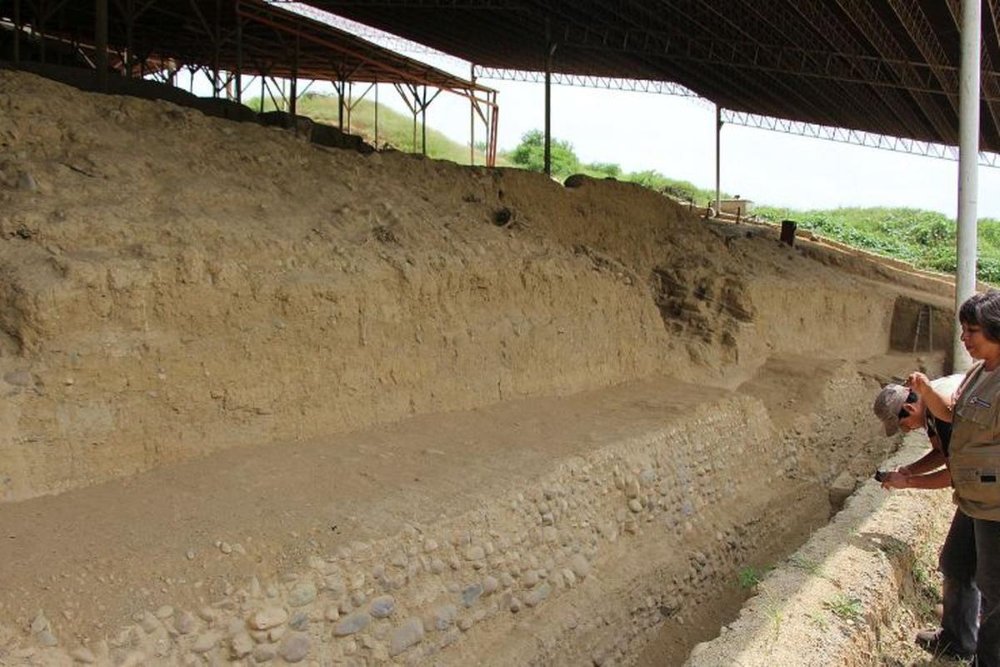
Monumental Archaeological Zone of Cabeza of the Vaca
The Monumental Archaeological Zone of Cabeza de Vaca is an archaeological site located in the extreme northwest of Peru, in the department and province of Tumbes, district of Corrales, hamlet of Cabeza de Vaca. It occupies a strategic location on the Qhapaq Ñan, the ancient Inca trail, and was the final destination of the Inca Coastal Trail and the main port of entry for the Spondylus coming from the Gulf of Guayaquil.
The archaeological site is made up of a series of stone and adobe structures, as well as superficial concentrations of cultural material (ceramic fragments, mollusc remains, carving and food debris, bone remains, stone tools, etc.) which are distributed throughout the site.
History
The Monumental Archaeological Zone of Cabeza de Vaca, located in the department of Tumbes in Peru, is home to a rich history dating back thousands of years. It is a fascinating place that has witnessed the development of diverse cultures and civilisations, leaving indelible traces in its architecture, artefacts and traditions.
Early settlers and the Vicus culture (1500 B.C. – 500 A.D.)
Archaeological evidence suggests that the area was inhabited thousands of years ago by nomadic hunting and fishing groups. Around 1500 BC, the Vicus culture flourished in the region, leaving an impressive legacy of pottery with depictions of divinities, animals and scenes of daily life.
Tumbes Culture (500 A.D. – 1000 A.D.)
Around 500 AD, the Tumbes culture took hold in the area, characterised by its polychrome pottery and elaborate gold and silver work. Archaeological remains from this period reveal the existence of a complex and organised society with ceremonial centres and public squares.
Expansion of the Inca Empire (1450 AD) In the 15th century, the Inca Empire conquered the Tumbes region, incorporating it into its vast territory. Cabeza de Vaca became an important administrative and religious centre, connecting with the rest of the empire through the Qhapaq Ñan, the network of Inca roads.
Arrival of the Spanish and the destruction of the site (1532 A.D.)
In 1532, the Spanish conquistadors arrived at Cabeza de Vaca, marking the beginning of the end of Inca culture. The archaeological site was looted and destroyed, and its inhabitants were subjected to colonial rule.
Rediscovery and enhancement (20th and 21st centuries)
In the 20th century, the Monumental Archaeological Zone of Cabeza de Vaca began to be explored by archaeologists, who revealed the historical and cultural importance of the site. Since then, several research and conservation works have been carried out to enhance the value of this invaluable heritage.
An invaluable cultural legacy
Today, the Monumental Archaeological Zone of Cabeza de Vaca is a place open to the public that allows visitors to learn about the history and culture of the people who inhabited the region. Its adobe and stone structures, ceramic fragments, spondylus shells and other archaeological remains offer a tangible testimony of the past and a window into the cosmovision of ancient civilisations.

How to get to the monumental archaeological site of Cabeza de Vaca?
To get to in Tumbes, Peru, you can follow these general steps:
- Travel to Tumbes: Firstly, you need to travel to the city of Tumbes. You can do this by flying from Lima or taking a bus from various cities in northern Peru.
- Transportation to the Archaeological Zone: Once in Tumbes, there are several options to reach the archaeological zone:
- Public transport: You can take a local bus heading south from Tumbes towards the district of Corrales. Make sure to inquire if the bus passes near the Cabeza de Vaca Archaeological Zone.
- Taxi or shared ride: You can also take a taxi from downtown Tumbes or a shared ride (colectivo) heading towards the desired direction. It’s advisable to agree on the fare before getting into the taxi.
- Precise location: Ensure you have the exact location or GPS coordinates of the Monumental Archaeological Zone of Cabeza de Vaca so the driver can take you directly there.
- Road conditions: Part of the road to the archaeological zone might be unpaved, so check the road conditions depending on the season and rainfall.
- Opening hours and access: Verify the opening hours of the archaeological zone before planning your visit. Also, remember to bring water and sunscreen as the weather can be hot.
By following these steps, you’ll be able to reach the Monumental Archaeological Zone of Cabeza de Vaca and enjoy its historical and architectural beauty in Tumbes, Peru.

Recommendations for visiting
Here are some recommendations for visiting the Monumental Zone of Cabeza de Vaca in Tumbes, Peru:
- Opening Hours and Access: Verify the opening hours of the site before planning your visit. Arrive early enough to explore at a leisurely pace without feeling rushed.
- Guide or Information: Consider hiring a local guide. They can provide detailed information about the history and significance of the archaeological structures you will be visiting.
- Appropriate Clothing and Footwear: Wear lightweight, comfortable clothing, preferably in light colors due to the warm climate of the region. Opt for sturdy and comfortable footwear suitable for walking on uneven terrain.
- Sun Protection and Water: Tumbes can be very sunny and hot, so bring sunscreen, a hat or cap, and plenty of water to stay hydrated during your visit.
- Respect for the Environment: As with any archaeological site, respect the rules and signage. Avoid damaging ancient structures, refrain from leaving litter, and do not disturb local flora and fauna.
- Photography: Inquire about any photography restrictions before taking pictures. Some sites may have specific regulations regarding camera use.
- Safety Precautions: Keep your belongings secure at all times and exercise caution when walking on potentially slippery or uneven surfaces.
- Interaction with the Local Community: Take the opportunity to learn more about the local culture by interacting with residents, if possible.
By following these recommendations, you’ll have a more enriching and safe experience visiting the Monumental Archaeological Zone of Cabeza de Vaca in Tumbes.
Monumental Archaeological Zone of Cabeza of the Vaca














